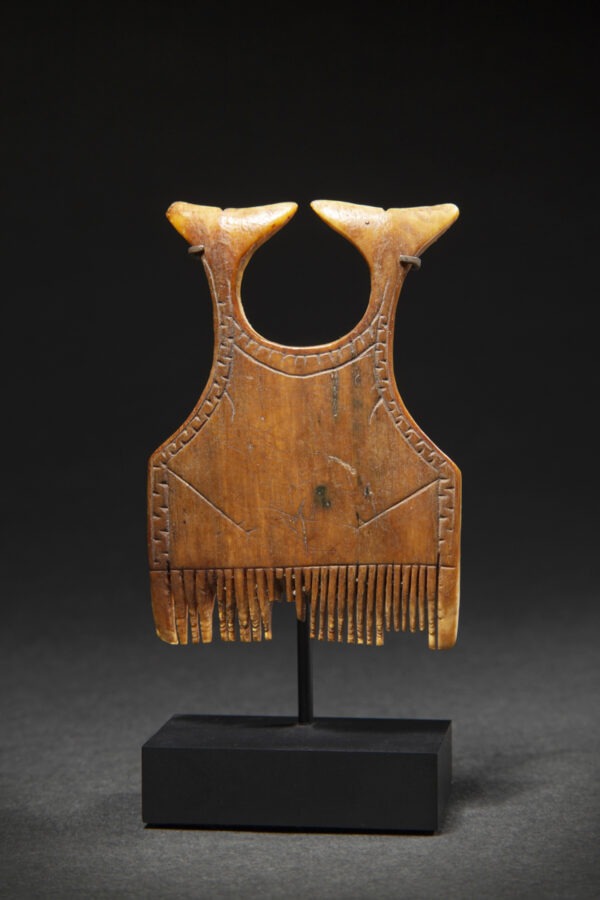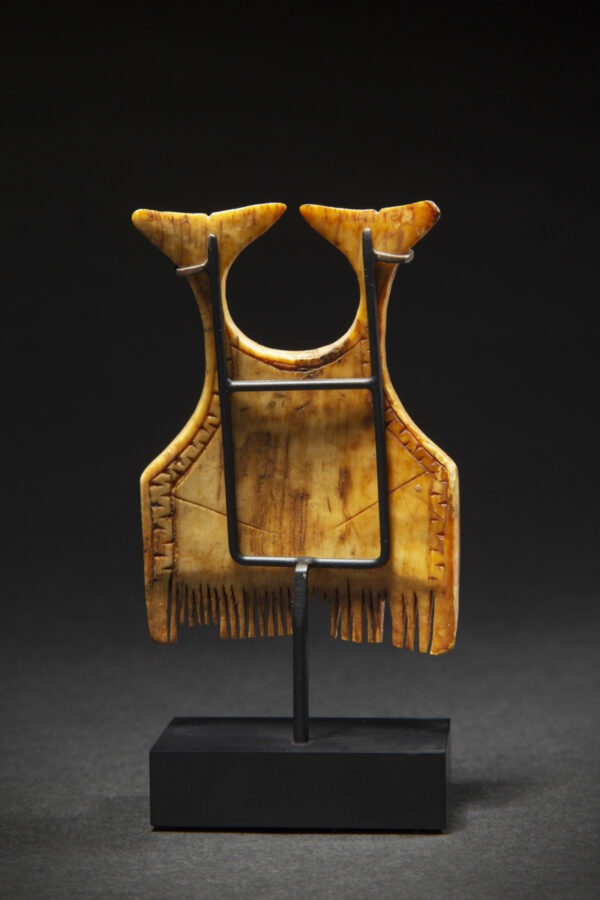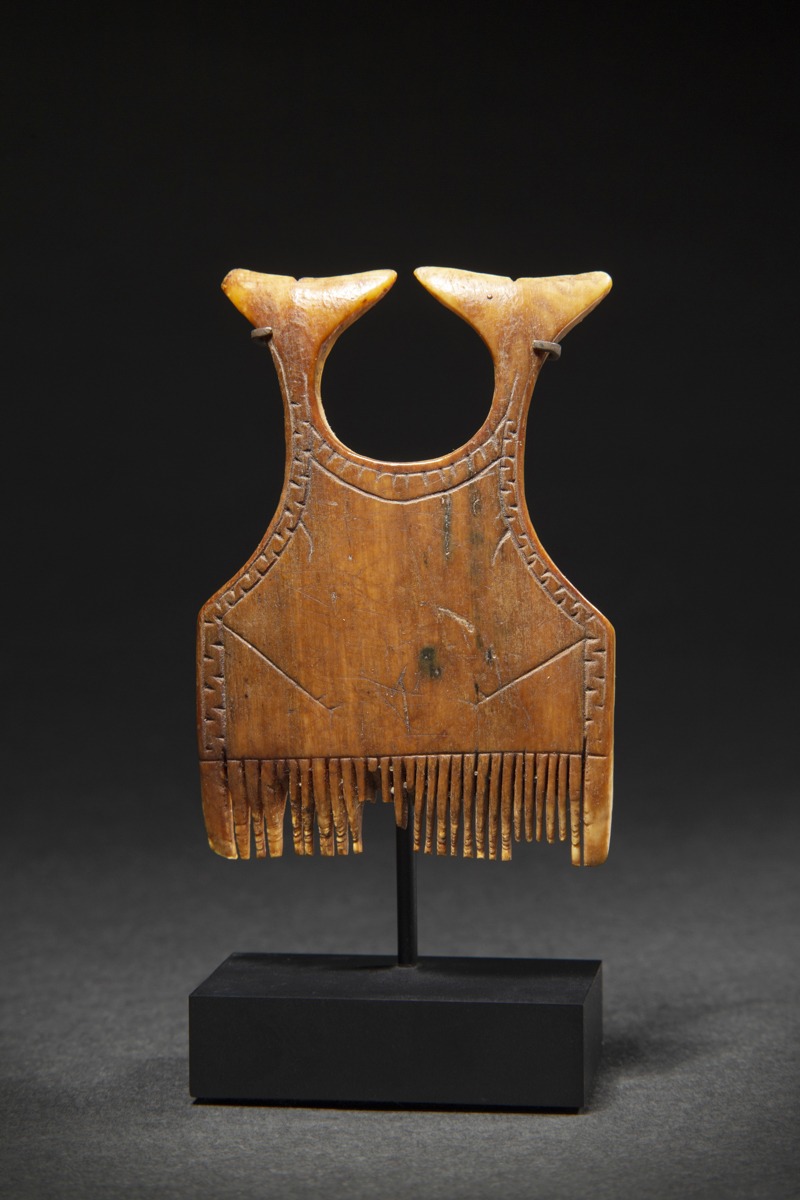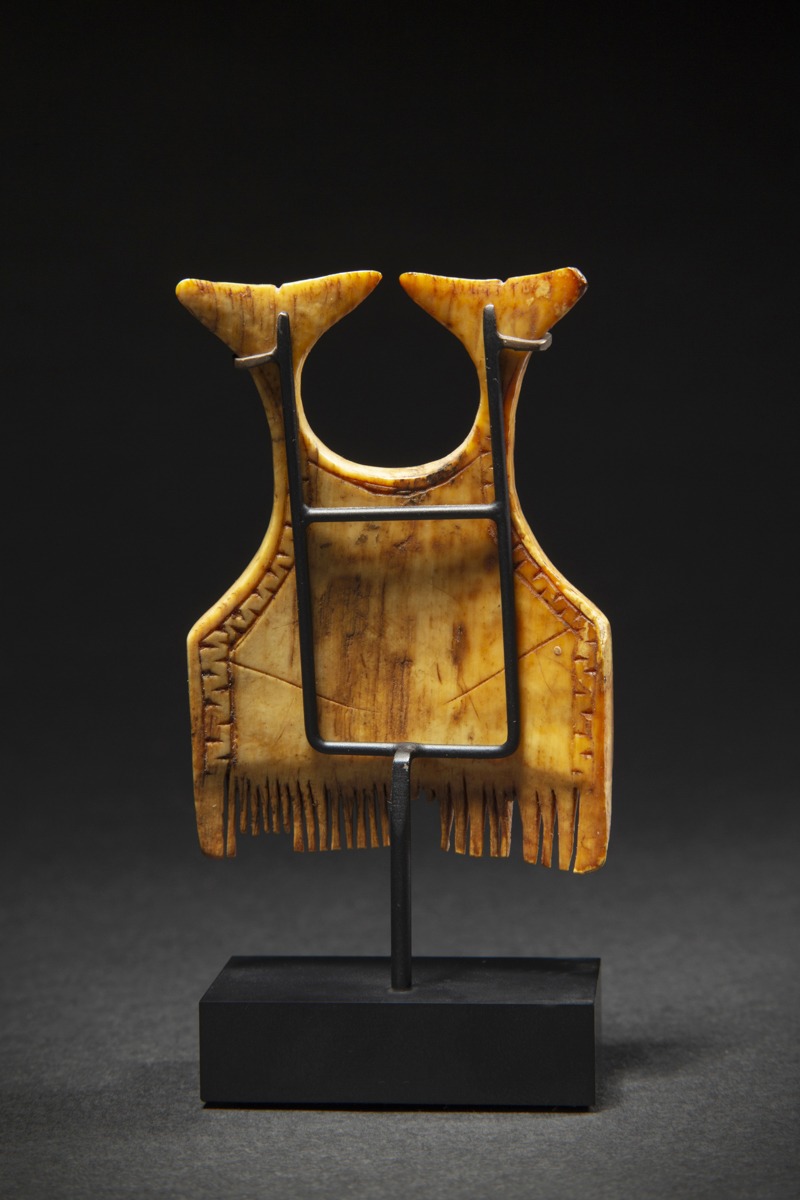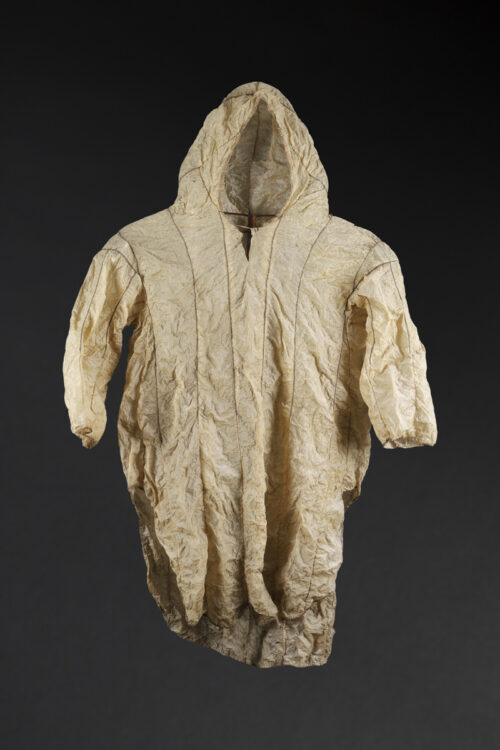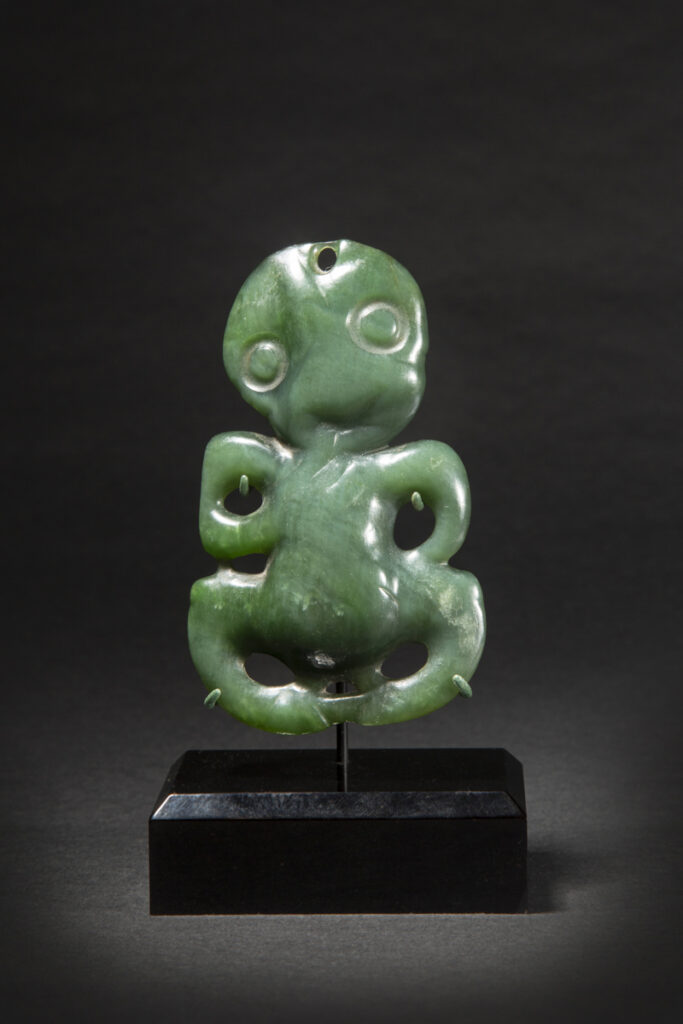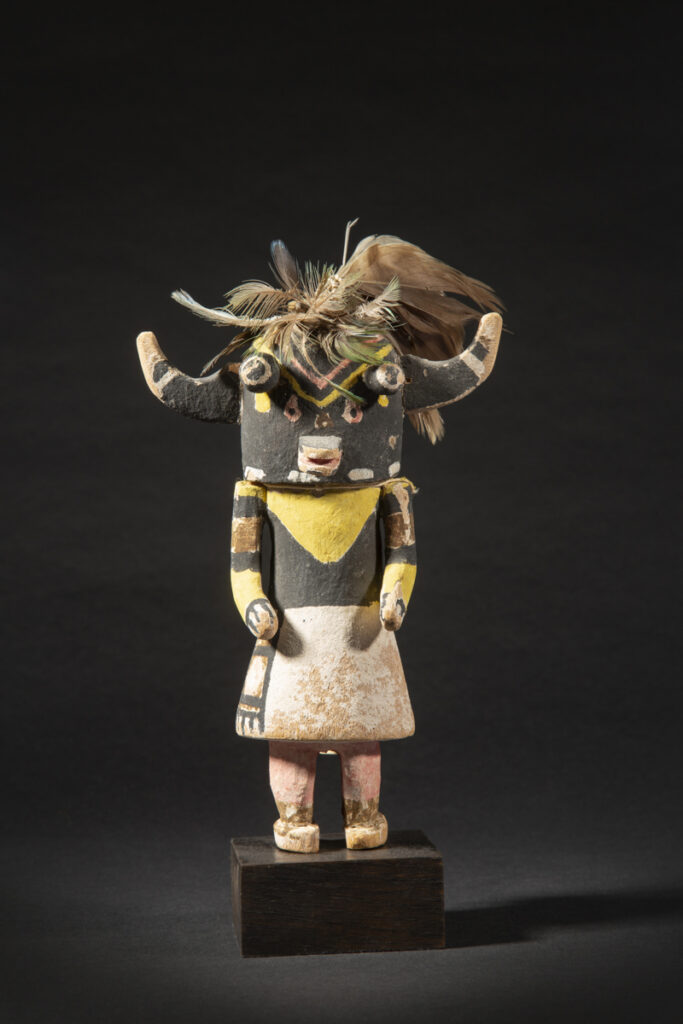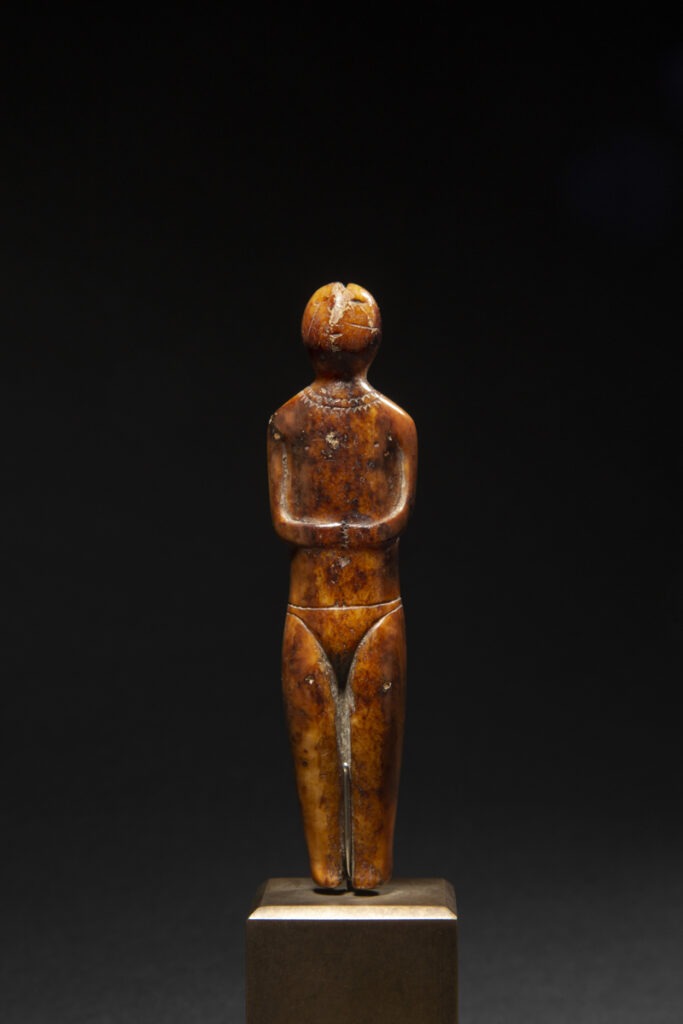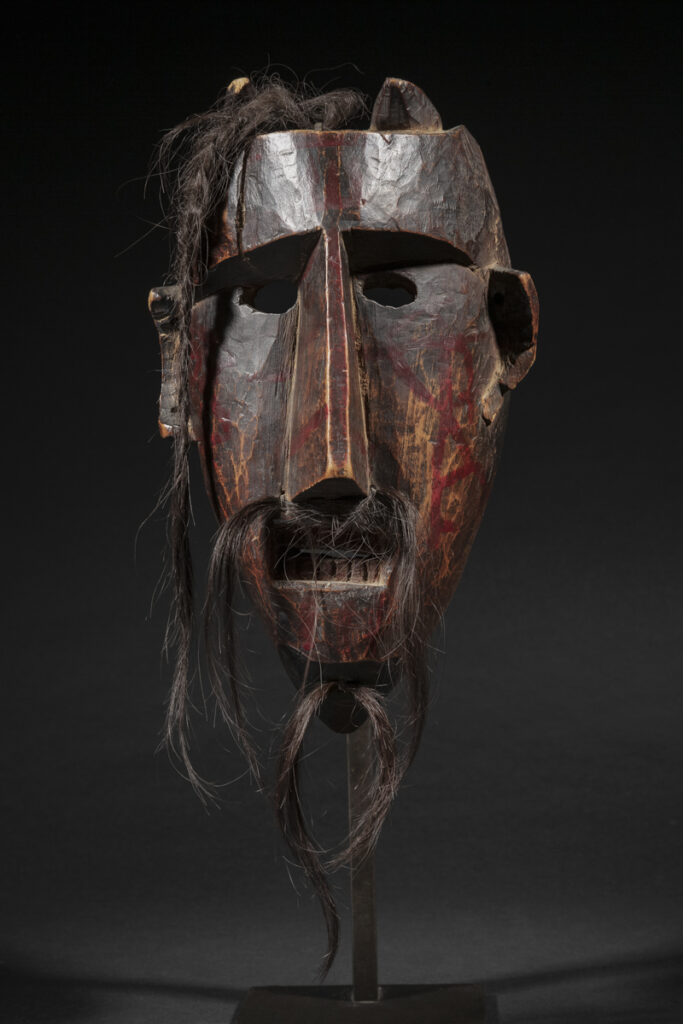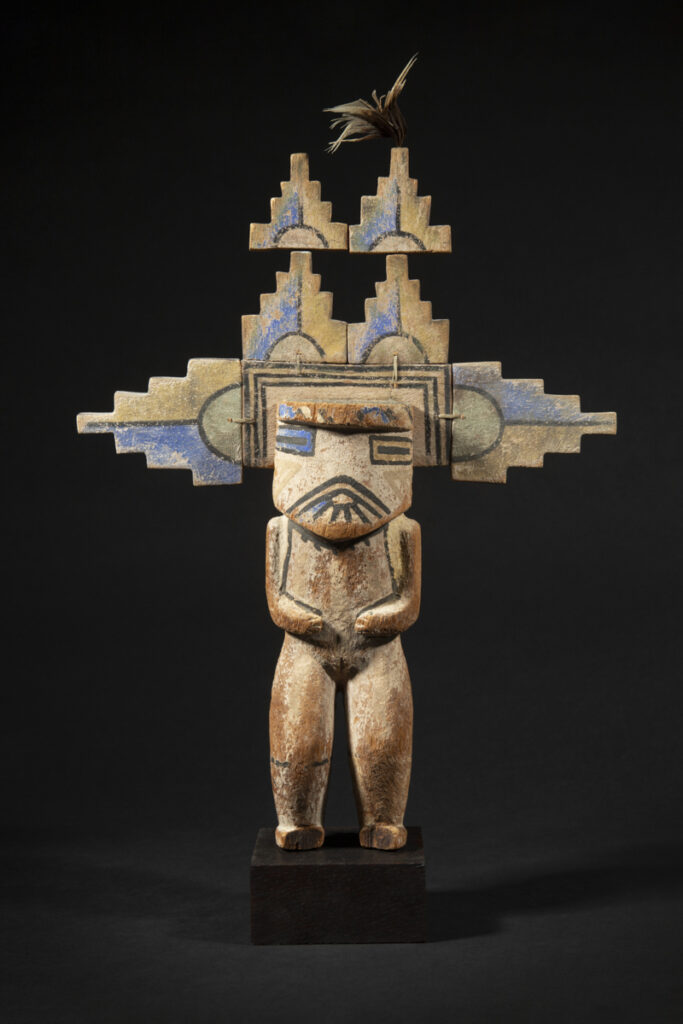North America | Alaska
Comb
Alaska
Whale Tail comb
Thule culture – Ancient Eskimo
Western Alaska
1200– 1700 AD
Marine Ivory
Height: 7 cm – 2 ¾ in.
Provenance
Reportedly excavated in Shishmaref, Alaska
Ex collection Peggy Au Schatz, Detroit, USA
Ex Christie’s New York, 25 Nov. 1994, lot 184
Ex collection Bill & Carol Wolf, New Jersey, USA
Ex collection Donald Ellis, Ontario, Canada
Ex collection Guy Porré & Nathalie Chaboche, Paris
Publication
« Art of the Arctic, Reflections of the Unseen », Donald Ellis, 2016, pl. 72 p. 75
Exhibition
Detroit Institute of Arts Museum, Detroit, USA, on long-term loan 1984-1995
Thule double whale comb 7 cm / Galerie Flak
Price: on request
This carving was first a utilitarian artefact: the comb was notably used in the preparation of bear fur and skins, as well as for combing hair.
This ingenious utilitarian object is here elevated to the level of a work of fine art and takes on an eminently ritual character.
As noted in "Gifts from the Ancestors " (chapter IV.1 page 210), when whaling became the dominant focus of the Bering Strait economy in Punuk times, whale-tail effigies began to appear on implements of all kinds.
This comb suggests a link to historically recorded beliefs. An Iñupiaq whaling captain's wife could not wash or comb her hair during the hunt, one of many prohibitions that emphasized her influence over the whale's spirit. Breaking these rules meant that the animal would turn away from the hunters or escape once it had been harpooned.
In addition to two carved flukes, this comb displays refined geometric incised motifs.
This ingenious utilitarian object is here elevated to the level of a work of fine art and takes on an eminently ritual character.
As noted in "Gifts from the Ancestors " (chapter IV.1 page 210), when whaling became the dominant focus of the Bering Strait economy in Punuk times, whale-tail effigies began to appear on implements of all kinds.
This comb suggests a link to historically recorded beliefs. An Iñupiaq whaling captain's wife could not wash or comb her hair during the hunt, one of many prohibitions that emphasized her influence over the whale's spirit. Breaking these rules meant that the animal would turn away from the hunters or escape once it had been harpooned.
In addition to two carved flukes, this comb displays refined geometric incised motifs.
Explore the entire collection
